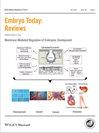Andra H. James
下载PDF
{"title":"Thrombosis in pregnancy and maternal outcomes","authors":"Andra H. James","doi":"10.1002/bdrc.21106","DOIUrl":null,"url":null,"abstract":"<p>Pregnancy increases the risk of thrombosis four- to five-fold. Seventy-five to eighty percent of pregnancy-related thrombotic events are venous and twenty to –twenty-five percent are arterial. The main reason for the increased risk is hypercoagulability. Women are hypercoagulable because they have evolved so that they are protected against the bleeding challenges of pregnancy, miscarriage, or childbirth. Both genetic and acquired risk factors can further increase the risk of thrombosis. The maternal consequences of thrombosis of pregnancy include permanent vascular damage, disability, and death. While the maternal outcomes of thrombosis can be modified by anticoagulation therapy, management of thrombosis during pregnancy is the subject of another paper in this issue (see paper by B. Konkle). This review will focus on the epidemiology, pathophysiology, risk factors, and maternal consequences of thrombosis in pregnancy. Birth Defects Research (Part C) 105:159–166, 2015. © 2015 Wiley Periodicals, Inc.</p>","PeriodicalId":55352,"journal":{"name":"Birth Defects Research Part C-Embryo Today-Reviews","volume":"105 3","pages":"159-166"},"PeriodicalIF":0.0000,"publicationDate":"2015-09-18","publicationTypes":"Journal Article","fieldsOfStudy":null,"isOpenAccess":false,"openAccessPdf":"https://sci-hub-pdf.com/10.1002/bdrc.21106","citationCount":"50","resultStr":null,"platform":"Semanticscholar","paperid":null,"PeriodicalName":"Birth Defects Research Part C-Embryo Today-Reviews","FirstCategoryId":"1085","ListUrlMain":"https://onlinelibrary.wiley.com/doi/10.1002/bdrc.21106","RegionNum":0,"RegionCategory":null,"ArticlePicture":[],"TitleCN":null,"AbstractTextCN":null,"PMCID":null,"EPubDate":"","PubModel":"","JCR":"Q","JCRName":"Medicine","Score":null,"Total":0}
引用次数: 50
引用
批量引用
Abstract
Pregnancy increases the risk of thrombosis four- to five-fold. Seventy-five to eighty percent of pregnancy-related thrombotic events are venous and twenty to –twenty-five percent are arterial. The main reason for the increased risk is hypercoagulability. Women are hypercoagulable because they have evolved so that they are protected against the bleeding challenges of pregnancy, miscarriage, or childbirth. Both genetic and acquired risk factors can further increase the risk of thrombosis. The maternal consequences of thrombosis of pregnancy include permanent vascular damage, disability, and death. While the maternal outcomes of thrombosis can be modified by anticoagulation therapy, management of thrombosis during pregnancy is the subject of another paper in this issue (see paper by B. Konkle). This review will focus on the epidemiology, pathophysiology, risk factors, and maternal consequences of thrombosis in pregnancy. Birth Defects Research (Part C) 105:159–166, 2015. © 2015 Wiley Periodicals, Inc.
妊娠期血栓形成与产妇结局
怀孕会使血栓形成的风险增加四到五倍。75 - 80%的妊娠相关血栓事件是静脉血栓,20 - 25%是动脉血栓。风险增加的主要原因是高凝性。女性是高凝血的,因为她们已经进化到可以防止怀孕、流产或分娩带来的出血挑战。遗传和获得性危险因素均可进一步增加血栓形成的风险。妊娠血栓形成的产妇后果包括永久性血管损伤、残疾和死亡。虽然抗凝治疗可以改变血栓形成的产妇结局,但妊娠期血栓形成的管理是本期另一篇论文的主题(见B. Konkle的论文)。本文将对妊娠期血栓形成的流行病学、病理生理学、危险因素和产妇后果进行综述。出生缺陷研究(C辑)105:159-166,2015。©2015 Wiley期刊公司
本文章由计算机程序翻译,如有差异,请以英文原文为准。

 求助内容:
求助内容: 应助结果提醒方式:
应助结果提醒方式:


